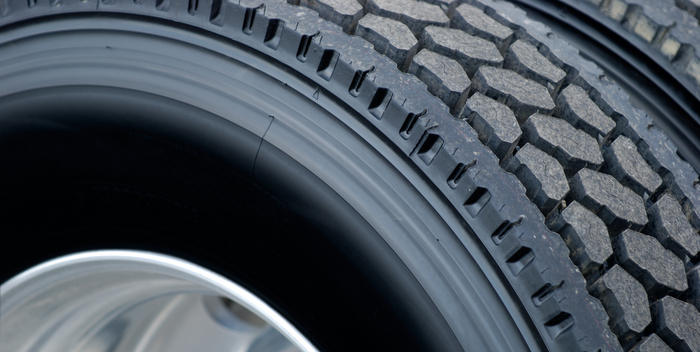Much has been written about the different functions performed by modern truck tires. In fact, automotive engineers have often referred to the pneumatic tire as the single most complex component on a vehicle. This may be challenged, today, by the increasingly complex electronic control devices designed to interface multiple drivetrain components, but tires are certainly multi-functional and highly evolved combinations of modern science. They also still contain more than a bit of empirical “art.” For starters, consider that all forces of acceleration, deceleration (braking), cornering and load carrying are connected to the road only through the tires. Secondly, consider the wide extremes of temperature, moisture, road surfaces, side winds and other operating environments that tires face. Thirdly, consider that tires are composites of many types of rubber, chemicals and reinforcing materials (e.g. steel, fiberglass, nylon, and others). Modern linehaul tires typically have up 14 different rubber types and up to 43 components contained in one structure that many novices believe is simply poured into a mold.
While many computer-assisted programs and techniques are used in tire design and testing, there is still no single mathematical or computer modeling that will assure that a tire performs properly. Instead, numerous design analyses are used, which consider the tire as a thinwall membrane, a column structure and other designs in which each region of the tire is examined for deflection, stress/strain performance, fatigue cycling and beyond. Many veteran designers have their own notebooks of “secret stuff” for reference. It has often been said that if a modern truck tire had to be designed from scratch, the task would take brilliant engineers years to accomplish. All of this has pushed tires costs up, making tires an assets to be intelligently managed, as opposed to an expense item. Total service of up to a million miles, including retreads and 10 years of service life, is not unreasonable, but it won’t happen without pushing the envelopes of optimum brand/type selection and diligent maintenance.
One often-asked question is: what causes tires to wear fast, slow or differently? The answer is complex and can best be addressed by axle. Drive tire wear is directly related to the torque transferred through them. Clutch, U-joint and drive tire wear are highly correlated. Late-model high torque output diesels wear tires much more aggressively than older engines, even those with higher horsepower ratings.
Most popular drive tires of 20 years ago would simply not be durable in linehaul service today. Therefore, single drive axle tractors, whether traditional SA, tag or pusher setups, generally wear tires about 60% faster than their twin screw counterparts in similar service. Since the primary wear mechanism is tangential (circumferential) scuffing from driving and braking torque, drive tires are not significantly affected by minor misalignment issues.
Steer tires, on the other hand, are worn mostly by lateral scuffing created when they need to generate side forces to change direction, or steer, the truck. Improper toe settings are the most common cause of excessive steer tire wear, but misaligned drive axles are a strong second cause, especially on tractors in linehaul service with high torque engines. This is because the steer tires must constantly correct for the side force caused by drive axles not exactly square to the chassis centerline.
Similarly, worn or improper hardness torque rod bushings create the same effect, since it’s the dynamic (under torque) thrust angle seen by the steer tires. High frequency and severity of wheel cut will also cause rapid wear.
A good driver training program should emphasize using all of the reasonably available real estate to negotiate turns to minimize excessive steer tire scuffing.
It is important to distinguish between fast wear and irregular wear on steer tires, since the slower the wear, the more susceptible tires become to irregular wear. Thankfully, with advances in steer tire designs and improved tolerances of vehicle alignment, both at OE and in the service markets, steer tire wear has improved dramatically.
Traditional tire selections and maintenance should be re-evaluated frequently, especially if your fleet makes changes in truck configurations, engine choices, and, of course, duty cycles such as full time linehaul vs. dual duty highway/local delivery. Many tire specialty options are available and these are best understood by experienced tire professionals. They are available, and shame on those fleets who don’t take advantage of their updated knowledge.














